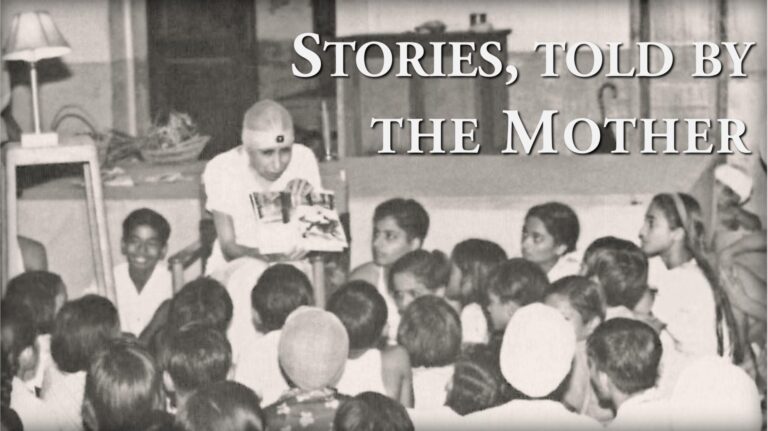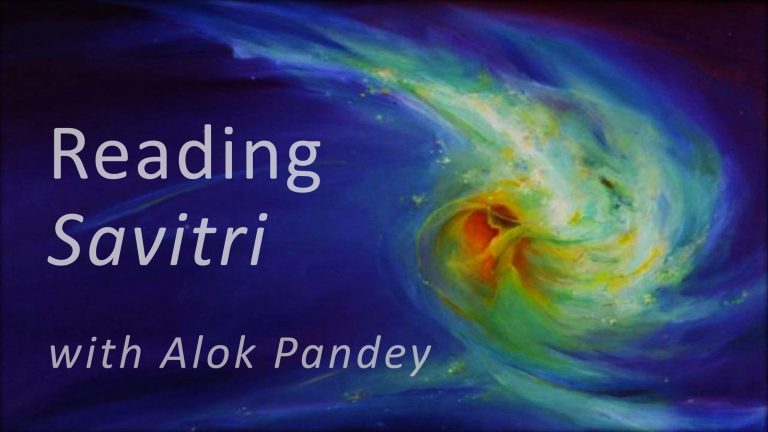 Mahabharata is the longest epic written in any language. Comprising of nearly 100,000 shlokas or 200,000 lines (each shloka being a couplet of two lines) it includes within its framework one of the subtlest and practical scriptures, a book at once of yoga and metaphysics, known as the Bhagwat Gita, or the song divine. Whether the Gita has been a later insertion as some scholars suggest or part of the epic is not of much practical relevance. It is so beautifully interwoven into the fabric of the story that it flows naturally at the moment of its inception. It is also not of much importance as how much of the story can be regarded as historically factual and scientifically true. The style of the mystics has always been this way. Whether we see the Ramayana, the Mahabharata and the many Puranas or the Greek and Egyptian and all other myths including the famous Odyssey and the Iliad they all move simultaneously on a number of planes of our own and world existence. It is the limitation of material science, though that too is now opening to admit other worlds, that it confines itself to the most material of all worlds. But the mystic vision goes behind and beyond what is concrete and visible. He sees hidden aspects and powers. The world of the mystic is a world where forces of other worlds incarnate and push human life and world events, armies clash not only on the outer battlefields but also the inner ones. The soul of man is visualized by them as a world full of battle and surprise where forces that hinder and help, the gigantic titans that inflate the egos filling the human world with carnage and death, and the luminous gods who guide the life of man filling it with hope and life. Through all this clash and wrestle of forces within and outside (two terms of One Reality) the caravan of human life moves through the difficult evolutionary march. To this the Indian mystic adds the story of direct divine interventions through the incarnate Divine or the Avatara. This gives us the final missing clue to the great purpose towards which our life moves amidst all its bewildering complexities. The Divine, in the Ramayana and the Mahabharata does not simply stands behind the veil pushing men and events through the fiat of His Will using instruments to fulfil His grand design woven by Fate. He enters the play, assumes a human form, stands in the centre of the conflict during crucial periods of the world-churning, drinks the poison that emerges out of this churning, bears the fatal strokes and wounds and finally gives a new lease of life to the civilization and the epoch in which He is born. Nor is His action confined and limited to the Age in which the Divine Advent takes place. The tremors of the divine birth reverberate through centuries and millenniums and uphold humanity until the time for the next incarnation arrives.
Mahabharata is the longest epic written in any language. Comprising of nearly 100,000 shlokas or 200,000 lines (each shloka being a couplet of two lines) it includes within its framework one of the subtlest and practical scriptures, a book at once of yoga and metaphysics, known as the Bhagwat Gita, or the song divine. Whether the Gita has been a later insertion as some scholars suggest or part of the epic is not of much practical relevance. It is so beautifully interwoven into the fabric of the story that it flows naturally at the moment of its inception. It is also not of much importance as how much of the story can be regarded as historically factual and scientifically true. The style of the mystics has always been this way. Whether we see the Ramayana, the Mahabharata and the many Puranas or the Greek and Egyptian and all other myths including the famous Odyssey and the Iliad they all move simultaneously on a number of planes of our own and world existence. It is the limitation of material science, though that too is now opening to admit other worlds, that it confines itself to the most material of all worlds. But the mystic vision goes behind and beyond what is concrete and visible. He sees hidden aspects and powers. The world of the mystic is a world where forces of other worlds incarnate and push human life and world events, armies clash not only on the outer battlefields but also the inner ones. The soul of man is visualized by them as a world full of battle and surprise where forces that hinder and help, the gigantic titans that inflate the egos filling the human world with carnage and death, and the luminous gods who guide the life of man filling it with hope and life. Through all this clash and wrestle of forces within and outside (two terms of One Reality) the caravan of human life moves through the difficult evolutionary march. To this the Indian mystic adds the story of direct divine interventions through the incarnate Divine or the Avatara. This gives us the final missing clue to the great purpose towards which our life moves amidst all its bewildering complexities. The Divine, in the Ramayana and the Mahabharata does not simply stands behind the veil pushing men and events through the fiat of His Will using instruments to fulfil His grand design woven by Fate. He enters the play, assumes a human form, stands in the centre of the conflict during crucial periods of the world-churning, drinks the poison that emerges out of this churning, bears the fatal strokes and wounds and finally gives a new lease of life to the civilization and the epoch in which He is born. Nor is His action confined and limited to the Age in which the Divine Advent takes place. The tremors of the divine birth reverberate through centuries and millenniums and uphold humanity until the time for the next incarnation arrives.
Mahabharata (and the Ramayana) can thus be seen and understood at many levels and each is valid and complements the others. Most outwardly it represents a crisis through which human undergoes from time to time that have the potential to plunge it into abysses of destruction setting the clock of human evolution backwards by a few centuries if not millenniums. The crisis itself comes due a steady degeneration of the high and sublime values, the noble ways of life that are given to man for his evolution. This is what the Gita calls as “dharmasya glani” which has little to do with any formal organised religion (possibly there were none at that time), but the way of life based on certain eternal truths and the eternal law as given to mankind from time immemorial and activated in the memory of the race by countless Rishis, sages and yogis. A time comes when the degeneration is so large that there is a need for a complete change over. When the time comes for this complete change over, a near total transition from one Age, yuga, to another, then the Divine Himself appears in the font of the human march as its leader. He once again speaks the eternal word that man has forgotten and helps humanity both by his own life as example and by other direct and indirect means to navigate through this dangerous period. These periods of time when the Divine himself assumes a body to lead earth and humanity are indeed moments eternal when humanity takes a leap across some perilous bridge. The advent of the Divine during such moments when He himself takes the rein of humanity directly as the leader of the human march, “lokasangrahartha”, is called as the Avatara. The Avatara comes not only to establish the eternal truths but he also gives it a new form, a form that is in accord with the age, yugadharma so to say. There was a purpose that the old ways of life die so that the new ways may be born. This new way or course based on the eternal law, Sanatan Dharma, the spirit of which is always intact but the outer body changes as happens when the individual soul changes from one body to another. That is how evolution takes place.



